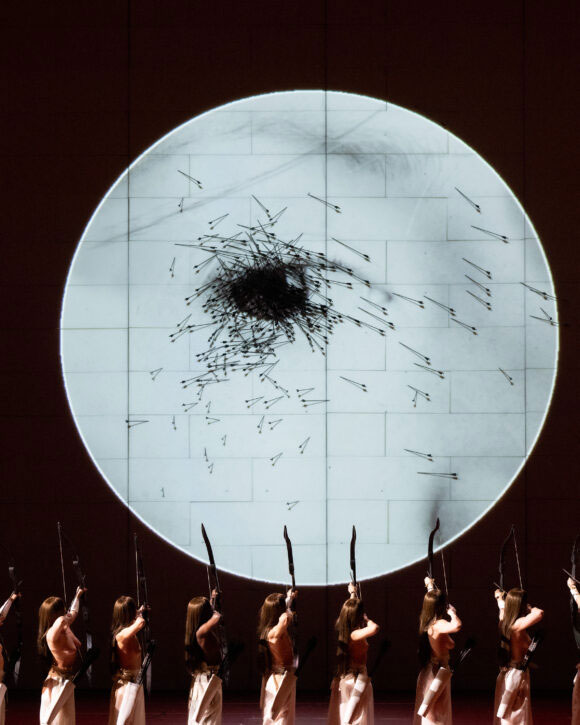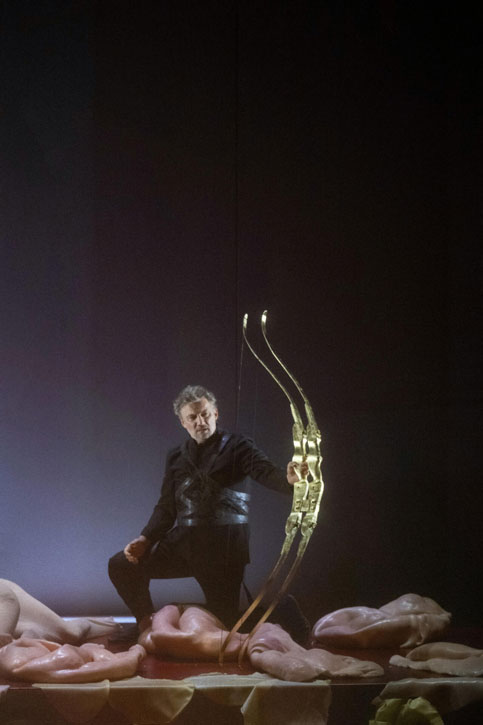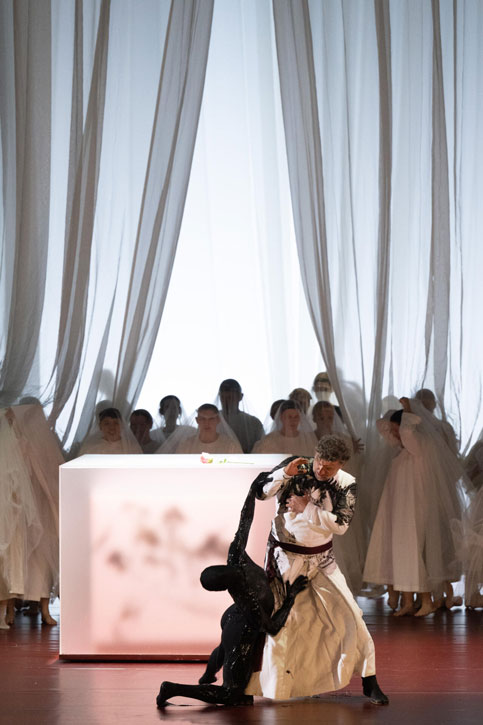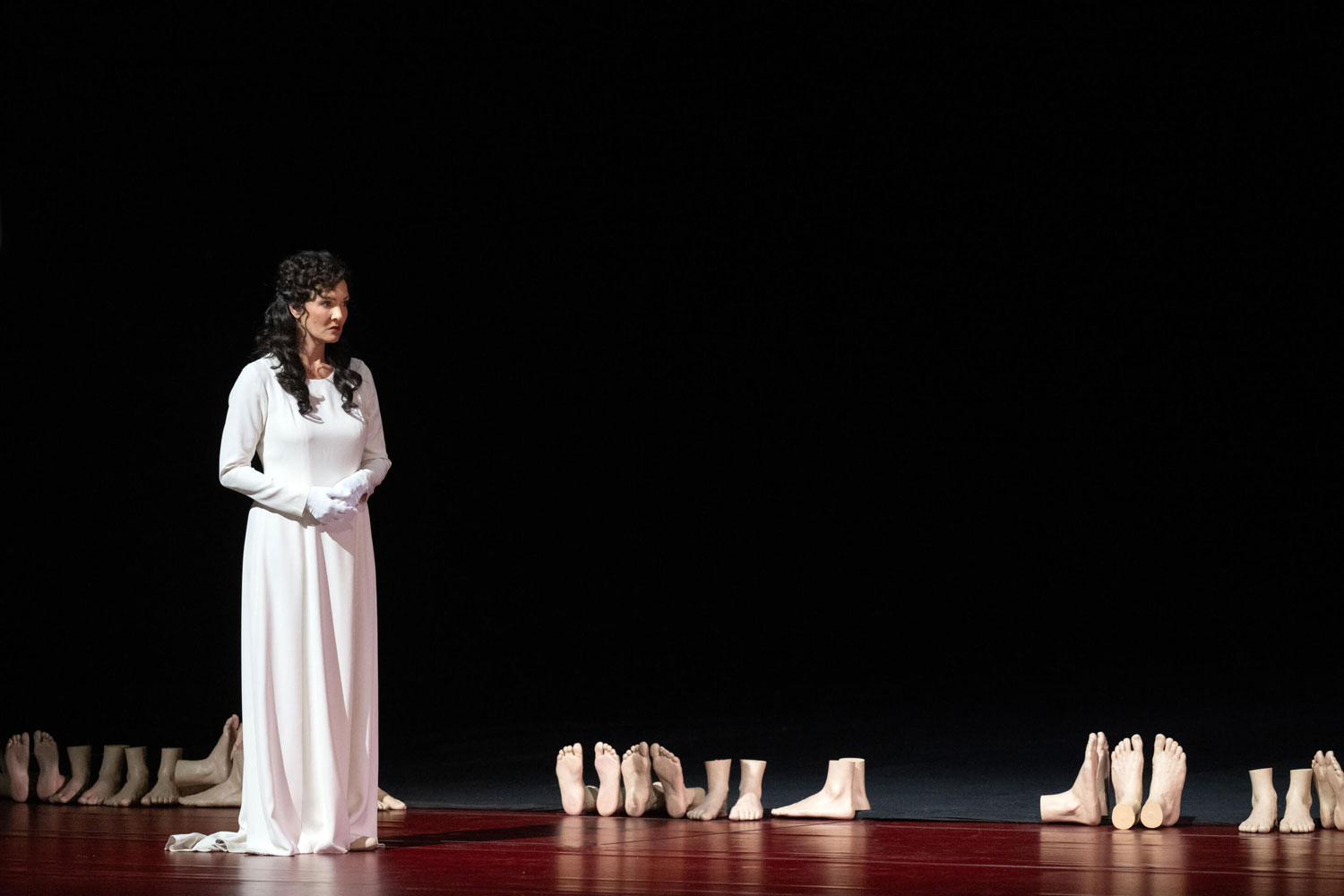Tannhäuser made the young Richard Wagner’s reputation. Charles Baudelaire, Franz Liszt, Oscar Wilde, Queen Victoria and other luminaries became obsessed with Wagner’s portrayal (and subtle critique) of the struggle between sacred and profane love. Today, however, when everyone wants to have it all, this topic says little to modern listeners – and so, Tannhäuser has become one of the least performed of Wagner operas. Yet the score remains ravishingly beautiful and the title role one of opera’s supreme vocal challenges.
This week the Salzburg Easter Festival has assembled the most distinguished cast of Tannhäuser in a generation – headed by superstar tenor Jonas Kaufmann. He is singing the title role for the first time – something he calls one of his final unfulfilled career ambitions. Baritone Christian Gerhaher, sopranos Marlis Peterson and Emma Bell, and bass George Zeppenfeld join him on stage, with Andris Nelsons and the Leipzig Gewandhaus Orchestra in the pit.

Kaufmann’s operatic career could be viewed as a single-handed effort to reverse the widespread presumption that great spinto and dramatic singers are disappearing. From what I heard Wednesday night, this conventional wisdom is right…and wrong.
Right because none of these singers – even, in some respects, Kaufmann himself – can really match the sheer vocal opulence (at full throttle) commanded by the greatest Wagnerian voices of the mid-20th century. Nor does this cast offset vocal power with intensely expressionistic theatricality, as has become the modern operatic norm in Germany. In neither respect do they overwhelm the listener.
Yet the conventional view is nonetheless wrong, because the singers in this production, along with the conductor and orchestra, have replaced the grand vocalism of the past with old-school virtues that date back even earlier. In the early 20th century and even back to Wagner’s day, theaters were smaller, individual musicians more idiosyncratic, textual clarity more prominent, and understated modes of expression more highly prized. Replicating that today generates performances tied together by such subtle transparency, balance, and restraint as to achieve its own historical greatness.

It is odd that Kaufmann waited so long to sing Tannhäuser, for this role seems to suit him better than any other I know. He has surmounted his share of vocal issues over the years, and is sometimes accused of fitting into certain parts by adopting quirky vocal mannerisms: an artificial baritonal resonance here, crooning high notes there, and so on. Yet Kaufmann’s performance here, in a role that destroys most tenors in 90 minutes, requires no compromise.
Tannhäuser seems to sit comfortably in the center of Kaufmann’s voice – freeing him to deploy nearly faultless technical command over intonation, support, and tonal coloring. The result matches, and at times exceeds, the virtues of his greatest predecessors in this role: the vocal elegance of Plácido Domingo, the crisp diction of Wolfgang Windgassen, and even the softly penetrating high voix mixte of the young Lauritz Melchior.
One hears this in Kaufmann’s memorable accounts of Tannhäuser’s major set pieces – from the pleas to Venus that launch the opera to the Rome Monologue that ends it. But his musical imagination and meticulous preparation really shine through everywhere else: this may well be the most complete Tannhäuser I have ever heard.

Just one example is the 15-minute grand ensemble that concludes Act 2, when Tannhäuser is sent off on a pilgrimage to Rome. Many, myself included, tend to dismiss this Meyerbeerian episode as evidence that Wagner had not yet developed the compositional maturity to overcome existing Romantic opera conventions. (German musicologist Carl Dahlhaus went further, dismissing the entire act as an “effective tableau…filled with theatrical parades.”) Many tenors sit tight, mouth the words, and save their energy for Act 3.
Not Kaufmann. He embraces this ensemble, with its high tenor line, as a unique musical opportunity. (Perhaps he knows also that Wagner himself believed that Tannhäuser’s “whole nature” is captured in this moment of recognition that he had committed a “dreadful crime.”) I cannot imagine these passages sung more beautifully, with pianissimo head tones that miraculous penetrate the swirling orchestra, chorus and soloists – a sublimely beautiful musical effect that also underscores the characters deep vulnerability and suffering.
Throughout, Gerhaher almost matches Kaufmann in interpretive rigor and imagination, approaching the role as a master Lieder-singer – which, of course, Wolfram’s day job. His clear diction, vocal focus and intonation are uncanny – even if at the slow tempos imposed upon him he sometimes drops the end of phrases. His courage and ability to sing pianissimo exceeds even that of Kaufmann. He transforms potential vocal limitations, such as a small voice and metallic glint at forte, to his advantage, drawing the audience in to a compelling portrayal of Wolfram’s elegant exterior and the sensitive soul beneath.
Many sopranos approach Elisabeth as a pure and youthful naïve – and perhaps such a performance would better match her colleagues. Yet Wagner did not see the character this way and neither does Peterson. From her bravura entrance aria (“Dich, teure Halle”), she projects a flesh-and-blood woman quivering with life – a quality expressed without overwhelming vocal power. One easily imagines that she is attracted to Tannhäuser not just by his virtue, but (perhaps unconsciously) by his sex-appeal. To save him, she boldly faces down the band of sanctimonious singers intent on murder.

Soprano Emma Bell replaces the previously announced mezzo Elīna Garanča as Venus. Bell’s Venus is solid, with a big healthy sound – sometimes impressive at the top. Yet she possesses neither the understated finesse of her colleagues nor the sensuous timbre of her character. One misses Garanča, who is not only the more accomplished singer, but might more closely approximated the restrained elegance of the performance.
Bass Georg Zeppenfeld’s clear enunciation and occasional low notes lend Landgraf Hermann fitting gravity – though not so much that he really stands out as primus inter pares at his own court, populated as it is by solid voices.
In keeping with the stylistic concept, the Leipzig Gewandhaus Orchestra, the Czech Philharmonic Chorus of Brünn and the Salzburger Bachchor, all conducted by Andris Nelsons, eschew the full-blooded, glossy account of this score one generally hears these days. Rather, they play and sing at a human scale, retaining, ever so slightly, the distinctively dusky timbre orchestras from that region have traditionally had. With constant adjustments of balance, Andris Nelsons molds these elements to achieve an extraordinary level of transparency, subtly and delicacy, revealing the interior lines and mesmerizing and seducing, rather than overwhelming, the listener.
To be sure, Nelsons’ constant micromanagement of color, balance and focus can undermine the score’s Wagnerian sweep – sometimes in ways that seem avoidable. One hears this primarily in idiosyncratic tempo choices: excessively slow tempos sometimes strain the singers while, almost everywhere, a ritardando is inserted at the end of vocal lines. Sometimes beautiful in themselves, these tempo fluctuations undermine forward momentum over longer time-spans, thereby obscuring the broader architecture. More transcendent, therefore, are the spots (for example, the “Entry of the Guests” and the final Pilgrim’s Chorus opera) where Nelsons sets a rock-solid pulse that releases the music to flow forward.
Little need be said about Romeo Castellucci’s production, which premiered in Munich in 2017 and can be found on line. He hails from the “opera production as contemporary art show” view of opera direction, which mixes and matches abstract artistic and symbolic elements to create aesthetically pleasing tableaus.
Some moments work. For example, I love how the pure world of Act II (white gauze separating people from another physically) is disturbed by a slimy black demon (like an overgrown Miyazaki soot sprite) grapples with Tannhäuser, smearing him with black grease.
That being said, much is either banal – yes, Tannhäuser is stuck between two demanding worlds – or self-indulgently fussy. Doubling almost everything with dancers, for example, even they are recruited from the able Bohdi Project and SEAD dance groups in Salzburg, just distracts from the music. What do 27 half-naked women shooting arrows at the wall have to do with the reverent strains of the opening Pilgrim’s Chorus? How does a pile of one dozen writhing dancers – I thought of the death throes of a giant millipede – illuminate Tannhäuser and Elizabeth’s second-act inability to connect? And, in the final scene, don’t dozens of changing statements about time projected on the back of the stage (from “A second has passed” to “A billion billion billion billion billion years have passed”) simply obscure Tannhäuser’s desperate existential desire for eternal salvation?
So, overall, these performances are about the music. They succed in setting an extraordinarily high standard and, perhaps also, reveal a clear stylistic road by which focused, transparent and subtly colored musicianship might revive contemporary Wagnerian performance practice. Recordings will surely circulate, if not from official sources than from some around me surreptitiously fiddling with Smart Phones. One way or another, this special moment in operatic history will be remembered and prized for decades and perhaps even centuries to come.
Andrew Moravcsik
Richard Wagner: Tannhäuser
Cast and production staff:
Hermann: Georg Zeppenfeld. Tannhäuser: Jonas Kaufmann. Wolfram von Eschenbach: Christian Gerhaher. Walther von der Vogelweide: Sebastian Kohlhepp. Biterolf: Edwin Crossley-Mercer. Heinrich der Schreiber: Dean Power. Reinmar von Zweter: Alexander Köpeczi. Elisabeth: Marlis Petersen. Venus: Elīna Garanča. Ein junger Hirt: Emily Pogorelc.
Orchestra: Leipziger Gewandhausorchester. Chorus: Czechphilharmonic Chorus Brno / Bachchor Salzburg. Ballet or dance group: Bodhi Project / SEAD Salzburg. Conductor: Andris Nelsons. Stage director: Romeo Castellucci. Set designer: Romeo Castellucci.
Top photo: Jonas Kaufmann as Tannhäuser. Photo by Monika Rittershaus.